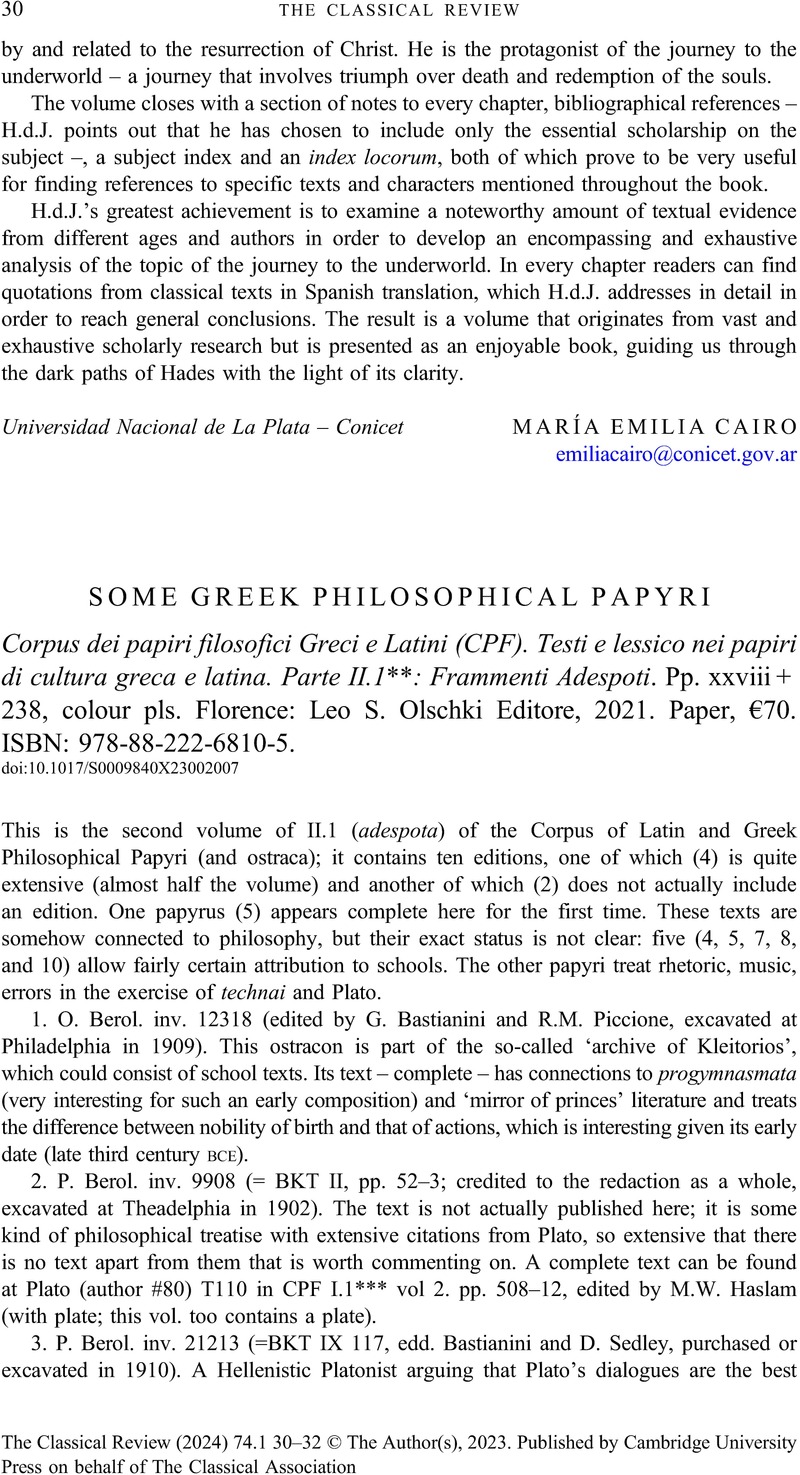No CrossRef data available.
Article contents
SOME GREEK PHILOSOPHICAL PAPYRI - Corpus dei papiri filosofici Greci e Latini (CPF). Testi e lessico nei papiri di cultura greca e latina. Parte II.1**: Frammenti Adespoti. Pp. xxviii + 238, colour pls. Florence: Leo S. Olschki Editore, 2021. Paper, €70. ISBN: 978-88-222-6810-5.
Review products
Corpus dei papiri filosofici Greci e Latini (CPF). Testi e lessico nei papiri di cultura greca e latina. Parte II.1**: Frammenti Adespoti. Pp. xxviii + 238, colour pls. Florence: Leo S. Olschki Editore, 2021. Paper, €70. ISBN: 978-88-222-6810-5.
Published online by Cambridge University Press: 17 November 2023
Abstract
An abstract is not available for this content so a preview has been provided. Please use the Get access link above for information on how to access this content.

- Type
- Reviews
- Information
- Copyright
- Copyright © The Author(s), 2023. Published by Cambridge University Press on behalf of The Classical Association



